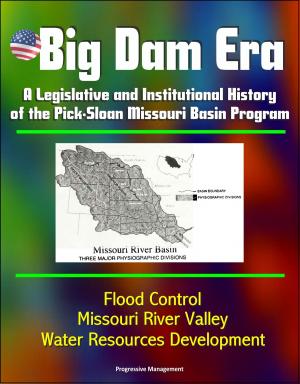Wildland Fire in Ecosystems: Fire and Nonnative Invasive Plants (Rainbow Series) Part 1 - Invasion Ecology, Use of Fire to Control Plants, Northeast, Southeast, Central, West Bioregions
Nonfiction, Science & Nature, Technology, Fire Science, Science, Biological Sciences, Botany| Author: | Progressive Management | ISBN: | 9781310975332 |
| Publisher: | Progressive Management | Publication: | December 2, 2014 |
| Imprint: | Smashwords Edition | Language: | English |
| Author: | Progressive Management |
| ISBN: | 9781310975332 |
| Publisher: | Progressive Management |
| Publication: | December 2, 2014 |
| Imprint: | Smashwords Edition |
| Language: | English |
This state-of-knowledge review of information on relationships between wildland fire and nonnative invasive plants can assist fire managers and other land managers concerned with prevention, detection, and eradication or control of nonnative invasive plants. The 16 chapters in this volume synthesize ecological and botanical principles regarding relationships between wildland fire and nonnative invasive plants, identify the nonnative invasive species currently of greatest concern in major bioregions of the United States, and describe emerging fire-invasive issues in each bioregion and throughout the nation. This volume can help increase understanding of plant invasions and fire and can be used in fire management and ecosystem-based management planning. The volume's first part summarizes fundamental concepts regarding fire effects on invasions by nonnative plants, effects of plant invasions on fuels and fire regimes, and use of fire to control plant invasions. The second part identifies the nonnative invasive species of greatest concern and synthesizes information on the three topics covered in part one for nonnative invasives in seven major bioregions of the United States: Northeast, Southeast, Central, Interior West, Southwest Coastal, Northwest Coastal (including Alaska), and Hawaiian Islands. The third part analyzes knowledge gaps regarding fire and nonnative invasive plants, synthesizes information on management questions (nonfire fuel treatments, postfire rehabilitation, and postfire monitoring), summarizes key concepts described throughout the volume, and discusses urgent management issues and research questions.
Keywords: ecosystem, fire effects, fire management, fire regime, fire severity, fuels, grass/fire cycle, invasibility, invasiveness, monitoring, nonnative species, plant community, plant invasion, plant response, plants, prescribed fire, rehabilitation, succession, vegetation, wildfire
Chapter 1 - Fire and Nonnative Invasive Plants—Introduction * Chapter 2 - Effects of Fire on Nonnative Invasive Plants and Invasibility of Wildland Ecosystems * Chapter 3 - Plant Invasions and Fire Regimes * Chapter 4 - Use of Fire to Manage Populations of Nonnative Invasive Plants * Chapter 5 - Fire and Nonnative Invasive Plants in the Northeast Bioregion * Chapter 6 - Fire and Nonnative Invasive Plants in the Southeast Bioregion * Chapter 7 - Fire and Nonnative Invasive Plants in the Central Bioregion * Chapter 8 - Fire and Nonnative Invasive Plants in the Interior West Bioregion * Chapter 9 - Fire and Nonnative Invasive Plants in the Southwest Coastal Bioregion
Chapter 1 * Fire and Nonnative Invasive Plants—Introduction * Fire Behavior and Fire Regimes * Organization and Use of This Volume * Chapter 2 * Effects of Fire on Nonnative Invasive Plants and Invasibility of Wildland Ecosystems * Invasion Ecology * Ecosystem Properties and Resource Availability * Properties of Native and Nonnative Plants * Nonnative Propagule Pressure * Influence of Fire on Invasions * Influence of Fire on Resource Availability and Interactions Between Plant Species * Influence of Fire Severity on Postfire Invasions * Influence of Fire Frequency on Postfire Invasions * Influence of Spatial Extent and Uniformity of Fire on Postfire Invasions * Influence of Fire Season and Plant Phenology on Postfire Invasions * Influence of Weather Patterns on Postfire Invasions * Generalizations About Fire Effects on Nonnative Invasives * Question 1. Does Fire Generally Favor Nonnatives Over Natives? * Question 2. Do Invasions Increase With Increasing Fire Severity? * Question 3. Does Additional Disturbance Favor Invasions? * Question 4. Do Invasions Become Less Severe With Increasing Time After Fire? * Question 5. Do Invasions Increase With Disruption of the Presettlement Fire Regime? * Question 6. Are Postfire Invasions Less Common in High Elevation Ecosystems?
This state-of-knowledge review of information on relationships between wildland fire and nonnative invasive plants can assist fire managers and other land managers concerned with prevention, detection, and eradication or control of nonnative invasive plants. The 16 chapters in this volume synthesize ecological and botanical principles regarding relationships between wildland fire and nonnative invasive plants, identify the nonnative invasive species currently of greatest concern in major bioregions of the United States, and describe emerging fire-invasive issues in each bioregion and throughout the nation. This volume can help increase understanding of plant invasions and fire and can be used in fire management and ecosystem-based management planning. The volume's first part summarizes fundamental concepts regarding fire effects on invasions by nonnative plants, effects of plant invasions on fuels and fire regimes, and use of fire to control plant invasions. The second part identifies the nonnative invasive species of greatest concern and synthesizes information on the three topics covered in part one for nonnative invasives in seven major bioregions of the United States: Northeast, Southeast, Central, Interior West, Southwest Coastal, Northwest Coastal (including Alaska), and Hawaiian Islands. The third part analyzes knowledge gaps regarding fire and nonnative invasive plants, synthesizes information on management questions (nonfire fuel treatments, postfire rehabilitation, and postfire monitoring), summarizes key concepts described throughout the volume, and discusses urgent management issues and research questions.
Keywords: ecosystem, fire effects, fire management, fire regime, fire severity, fuels, grass/fire cycle, invasibility, invasiveness, monitoring, nonnative species, plant community, plant invasion, plant response, plants, prescribed fire, rehabilitation, succession, vegetation, wildfire
Chapter 1 - Fire and Nonnative Invasive Plants—Introduction * Chapter 2 - Effects of Fire on Nonnative Invasive Plants and Invasibility of Wildland Ecosystems * Chapter 3 - Plant Invasions and Fire Regimes * Chapter 4 - Use of Fire to Manage Populations of Nonnative Invasive Plants * Chapter 5 - Fire and Nonnative Invasive Plants in the Northeast Bioregion * Chapter 6 - Fire and Nonnative Invasive Plants in the Southeast Bioregion * Chapter 7 - Fire and Nonnative Invasive Plants in the Central Bioregion * Chapter 8 - Fire and Nonnative Invasive Plants in the Interior West Bioregion * Chapter 9 - Fire and Nonnative Invasive Plants in the Southwest Coastal Bioregion
Chapter 1 * Fire and Nonnative Invasive Plants—Introduction * Fire Behavior and Fire Regimes * Organization and Use of This Volume * Chapter 2 * Effects of Fire on Nonnative Invasive Plants and Invasibility of Wildland Ecosystems * Invasion Ecology * Ecosystem Properties and Resource Availability * Properties of Native and Nonnative Plants * Nonnative Propagule Pressure * Influence of Fire on Invasions * Influence of Fire on Resource Availability and Interactions Between Plant Species * Influence of Fire Severity on Postfire Invasions * Influence of Fire Frequency on Postfire Invasions * Influence of Spatial Extent and Uniformity of Fire on Postfire Invasions * Influence of Fire Season and Plant Phenology on Postfire Invasions * Influence of Weather Patterns on Postfire Invasions * Generalizations About Fire Effects on Nonnative Invasives * Question 1. Does Fire Generally Favor Nonnatives Over Natives? * Question 2. Do Invasions Increase With Increasing Fire Severity? * Question 3. Does Additional Disturbance Favor Invasions? * Question 4. Do Invasions Become Less Severe With Increasing Time After Fire? * Question 5. Do Invasions Increase With Disruption of the Presettlement Fire Regime? * Question 6. Are Postfire Invasions Less Common in High Elevation Ecosystems?















